Key Takeaways
1. Machines Run Loops: The Power of Computational Repetition
There's one thing that a computer can do better than any human, animal, or machine in the real world: repetition.
Infinite loops. Computers excel at performing repetitive tasks without fatigue or boredom. This ability is the foundation of their power and versatility. Through loops, computers can execute tasks millions or billions of times with perfect consistency, far surpassing human capabilities.
Recursion and efficiency. Beyond simple repetition, computers can employ more complex forms of iteration like recursion. This allows for elegant solutions to problems that would be difficult or impossible to solve through linear thinking. Recursion enables the creation of intricate patterns and structures, such as fractals, which can model complex natural phenomena.
Examples of computational loops:
- Counting to large numbers
- Processing vast amounts of data
- Generating complex patterns
- Simulating natural phenomena
2. Machines Get Large: Embracing Exponential Thinking
Exponential thinking, as illustrated by the actual answer to the riddle, is what you become accustomed to in the computational world, not only because it governs the doubling power of Moore's law, but also because of the way that loops are often crafted.
Scale beyond human imagination. Computational systems can operate at scales that are difficult for humans to comprehend intuitively. This applies to both extremely large and extremely small scales, from processing billions of data points to manipulating individual atoms.
Exponential growth. The power of computation grows exponentially, as described by Moore's Law. This rapid growth leads to capabilities that can seem almost magical, as systems become orders of magnitude more powerful in relatively short periods.
Key concepts in computational scale:
- Moore's Law: doubling of computing power approximately every two years
- Big data: processing and analyzing massive datasets
- Nanotechnology: manipulating matter at the atomic and molecular scale
- Quantum computing: harnessing quantum mechanics for unprecedented computational power
3. Machines Are Living: The Evolution of Artificial Intelligence
AI à la levure is here without the sour smell of AI of the past.
From symbolic AI to neural networks. Artificial Intelligence has evolved from rule-based systems to more flexible and powerful neural networks. This shift has led to dramatic improvements in AI capabilities, particularly in areas like image and speech recognition.
Challenges and opportunities. As AI becomes more sophisticated, it raises new ethical and philosophical questions about the nature of intelligence and consciousness. While AI offers tremendous potential benefits, it also presents risks that must be carefully managed.
Key developments in AI:
- Deep learning: multi-layered neural networks capable of complex pattern recognition
- Natural language processing: enabling machines to understand and generate human language
- Computer vision: allowing machines to interpret and analyze visual information
- Reinforcement learning: AI systems that learn through trial and error
4. Machines Are Incomplete: The Shift to Iterative Product Development
The new definition of quality is the opposite of the Temple of Design's definition of quality: a finished product painstakingly crafted with integrity. The new definition of quality, according to the Temple of Tech, is an unfinished product flung out into the world and later modified by observing how it survives in the wild.
Embracing imperfection. In the computational era, the concept of a "finished" product is becoming obsolete. Instead, products are released in an incomplete state and continuously improved based on real-world usage and feedback.
Rapid iteration. This approach allows for faster development cycles and more responsive products. By releasing early and iterating frequently, companies can better meet user needs and adapt to changing market conditions.
Benefits of iterative development:
- Faster time-to-market
- Reduced development costs
- Increased user satisfaction through continuous improvement
- Greater flexibility to adapt to changing requirements
5. Machines Can Be Instrumented: The Rise of Data-Driven Decision Making
Just a decade ago, pleasing a technical customer was primarily a matter of ensuring that all the machinery worked the way it was supposed to perform. When technically minded people delivered systems for technically minded people, there was a rational exchange of metaphorical bridges to carry cars from point A to point B. There wasn't any need for the bridge to be beautiful, because it just needed to work.
Data as a competitive advantage. The ability to collect and analyze vast amounts of data is transforming how businesses operate and make decisions. This shift toward data-driven decision-making is creating new opportunities and challenges across industries.
Privacy and ethical concerns. As data collection becomes more pervasive, it raises important questions about privacy and the ethical use of personal information. Balancing the benefits of data-driven insights with individual rights is a critical challenge.
Key aspects of data-driven decision making:
- Big data analytics
- Machine learning and predictive modeling
- A/B testing and experimentation
- Real-time monitoring and feedback loops
6. Machines Automate Imbalance: Addressing Bias in Technology
An imbalanced system will produce imbalanced outcomes. When applying that thought to the tech industry, we can expect imbalanced products to be produced for the foreseeable future.
Recognizing inherent biases. Technology systems, being created by humans, can inadvertently perpetuate and amplify existing societal biases. This is particularly problematic as these systems become more influential in decision-making processes.
Striving for inclusivity. Addressing these biases requires conscious effort to create more diverse and inclusive teams in the tech industry. It also necessitates careful consideration of potential biases in data sets and algorithms.
Strategies for addressing bias in technology:
- Diverse hiring practices and inclusive workplace cultures
- Ethical AI development guidelines
- Regular audits of algorithms and data sets for potential biases
- Increased transparency in AI decision-making processes
7. Mind the Humans: Balancing Technology with Humanity
Recognizing one's own humanity while recognizing the humanity of others is the kind of gift that technology cannot give to you.
Human-centered design. As technology becomes more powerful and pervasive, it's crucial to maintain a focus on human needs and experiences. This means designing systems that augment and empower humans rather than replace them.
Ethical considerations. The rapid advancement of technology raises complex ethical questions that require careful consideration. Balancing technological progress with human values and societal well-being is a critical challenge for our time.
Key aspects of human-centered technology:
- User experience (UX) design
- Accessibility and inclusive design
- Ethics in technology development
- Digital well-being and mental health considerations
Last updated:
FAQ
What is "How to Speak Machine" by John Maeda about?
- Bridging Design and Computation: The book explores how computation is fundamentally changing the way we design, build, and interact with products and services, emphasizing the need for non-technical people to understand the "language" of machines.
- Six Laws of Machine Design: Maeda introduces six core laws that govern computational design: Machines Run Loops, Machines Get Large, Machines Are Living, Machines Are Incomplete, Machines Can Be Instrumented, and Machines Automate Imbalance.
- Human and Machine Synergy: The narrative weaves Maeda’s personal journey between the worlds of design and technology, advocating for a balance between human values and computational power.
- Accessible for Non-Techies: The book is written to demystify complex computational concepts for designers, business leaders, and anyone interested in the digital world, without requiring a background in computer science.
Why should I read "How to Speak Machine" by John Maeda?
- Understand the Digital World: The book provides essential insights into how computation shapes modern life, making it valuable for anyone working with or impacted by technology.
- Empowerment Through Knowledge: Maeda argues that understanding computation is a form of power, enabling readers to participate in shaping the future rather than being passive consumers.
- Bridges Design and Technology: It’s especially useful for designers, business leaders, and creatives who want to collaborate more effectively with technologists.
- Ethical and Humanistic Perspective: The book addresses the ethical implications of technology, emphasizing the importance of inclusion, diversity, and human values in computational design.
What are the key takeaways from "How to Speak Machine" by John Maeda?
- Computation is a New Raw Material: Understanding how machines "think" is as important as understanding traditional materials in design.
- Loops and Scale Matter: Machines excel at repetition and can operate at scales (both large and small) that are unnatural for humans.
- Incompleteness is a Feature: Digital products are never finished; they are always evolving, and iteration is more valuable than perfection.
- Data and Instrumentation: Modern products are instrumented to collect data, enabling rapid feedback and improvement, but also raising privacy and ethical concerns.
- Automation Can Amplify Imbalance: Without conscious intervention, computational systems can perpetuate and even automate social biases and inequalities.
How does John Maeda define "speaking machine" in "How to Speak Machine"?
- Understanding Computational Logic: "Speaking machine" means grasping the logic, culture, and language of computation, not just learning to code.
- Cultural Fluency: It’s about understanding the mindset and problem-solving approaches of technologists, which differ from traditional design or business thinking.
- Beyond Syntax: Knowing how machines process information, repeat tasks, and scale operations is more important than memorizing programming syntax.
- Empathy for Machines and Humans: It involves appreciating both the power and limitations of machines, and how they interact with human needs and values.
What are the "Six Laws of Design for a Computational Age" in "How to Speak Machine"?
- Machines Run Loops: Computers excel at repetition and can perform tasks endlessly without fatigue.
- Machines Get Large: Computational systems can scale exponentially, both in size and detail, far beyond human capacity.
- Machines Are Living: Modern machines exhibit lifelike behaviors, responding to stimuli and learning from data, blurring the line between living and non-living.
- Machines Are Incomplete: Digital products are always evolving; they are never truly finished and thrive on constant iteration.
- Machines Can Be Instrumented: Software can be monitored and measured in real time, enabling rapid feedback and improvement.
- Machines Automate Imbalance: Without careful design, machines can perpetuate and even amplify social biases and inequalities.
How does "How to Speak Machine" by John Maeda explain the concept of loops and recursion in computation?
- Loops as Repetition Engines: Machines are uniquely suited to perform repetitive tasks (loops) without tiring, unlike humans or animals.
- Recursion as Elegant Repetition: Recursion is a special form of repetition where a process refers to itself, enabling compact and powerful solutions to complex problems.
- Real-World Examples: Maeda uses personal anecdotes, such as his early programming projects, to illustrate how loops and recursion simplify and empower computational tasks.
- Artistic and Mathematical Parallels: The book draws connections between recursion in computation and patterns in nature, art, and mathematics (e.g., fractals, Möbius strips).
What does John Maeda mean by "Machines Get Large" and how does exponential thinking differ from linear thinking?
- Exponential vs. Linear Growth: Maeda explains that machines can scale exponentially, meaning their capabilities double repeatedly, leading to explosive growth that’s hard for humans to intuit.
- Nested Loops and Dimensions: By nesting loops within loops, machines can operate in multiple dimensions, creating vast computational spaces and possibilities.
- Powers of Ten: The book references the "Powers of Ten" concept to illustrate how computation allows us to zoom in and out across scales, from the microscopic to the cosmic.
- Losing Human Scale: Maeda warns that operating at such scales can disconnect technologists from human realities, potentially leading to toxic or exclusionary behaviors.
How does "How to Speak Machine" by John Maeda address the idea that "Machines Are Living"?
- Lifelike Behaviors: Modern machines can sense, respond, and adapt to stimuli, mimicking characteristics of living organisms.
- Artificial Intelligence and Machine Learning: The book discusses how advances in AI and neural networks have enabled machines to learn from data and exhibit behaviors that seem intelligent or even empathetic.
- Human Perception of Aliveness: Maeda explores how speed, responsiveness, and persistence in machines can make them appear "alive" to humans, sometimes blurring the distinction.
- Zombies and Automation: He uses the metaphor of "zombies" to describe tireless, automated systems that can outpace humans and potentially create new challenges.
What is the significance of "incompleteness" in computational products according to "How to Speak Machine"?
- Iterative Development: In the digital world, products are never truly finished; they are released early and improved continuously based on user feedback and data.
- Agile and Lean Methodologies: Maeda explains how modern software development favors shipping incomplete products and iterating rapidly, rather than waiting for perfection.
- Timeliness Over Timelessness: The value of a product lies in its ability to evolve and stay relevant, rather than being a static, "timeless" masterpiece.
- Embracing Imperfection: The book encourages readers to value learning and adaptation over initial completeness, making room for innovation and user-driven improvement.
How does "How to Speak Machine" by John Maeda discuss data, instrumentation, and the ethical implications of telemetry?
- Telemetry as Telepathy: Instrumented software can collect detailed data on user behavior, giving companies near-telepathic insight into customer needs and actions.
- Convenience vs. Privacy: Maeda highlights the trade-off between the convenience of personalized services and the risks to privacy and autonomy.
- Data Science and Humanism: The book advocates for combining quantitative (big data) and qualitative (thick data) approaches to truly understand and serve users.
- Ethical Responsibility: With great power comes great responsibility; designers and technologists must be mindful of how data is collected, used, and protected.
What does John Maeda mean by "Machines Automate Imbalance" and how can designers and technologists address this?
- Bias Amplification: Computational systems can perpetuate and even amplify existing social biases if not consciously designed to be inclusive.
- Diversity and Inclusion: Maeda stresses the importance of diverse teams and inclusive design practices to counteract systemic imbalances in technology.
- Open Source as Equity: The book highlights open source software as a means to democratize access and foster collaboration, reducing exclusion.
- Human-Centered Accountability: Ultimately, humans are responsible for the outcomes of automated systems, and must actively work to ensure fairness and equity.
What are the best quotes from "How to Speak Machine" by John Maeda and what do they mean?
- "Computation is an invisible, alien universe that is infinitely large and infinitesimally detailed." — Emphasizes the vast, often incomprehensible nature of the digital world and the need to understand it.
- "Being curious is better than being afraid—for when we are curious we get inventive, whereas when we are afraid we get destructive." — Encourages a mindset of exploration and learning in the face of technological change.
- "Machines are incomplete and imperfect, like us." — Reminds us that technology is a human creation, subject to flaws and continuous improvement.
- "With just the substitution of two letters for one, 'can' turns to 'care' and technology becomes humanized." — Highlights the importance of empathy and human values in technological progress.
- "Mind the humans." — A succinct call to prioritize human needs, ethics, and well-being in the design and deployment of computational systems.
Review Summary
Readers found How to Speak Machine to be an accessible introduction to computational thinking for non-technical audiences. Many appreciated Maeda's unique perspective combining art and technology, as well as his clear explanations of complex concepts. Some technical readers felt the content was too basic, while others found value in Maeda's insights on AI, diversity in tech, and the future of human-computer interaction. The book's structure and pacing received mixed reviews, but overall it was praised for its thought-provoking ideas and approachable style.
Similar Books
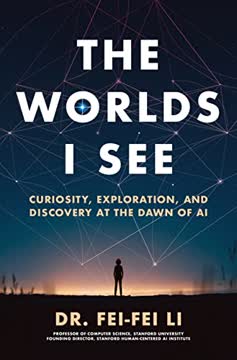
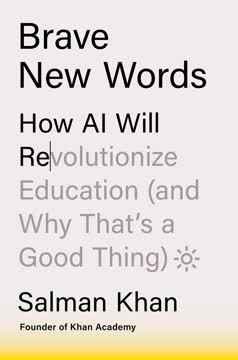

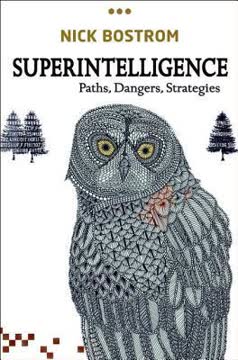
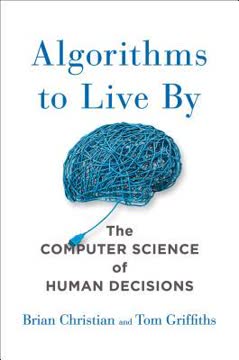
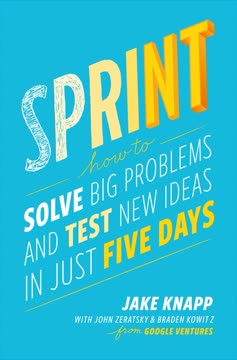


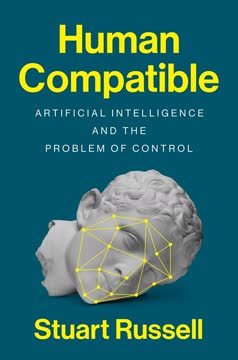

Download PDF
Download EPUB
.epub digital book format is ideal for reading ebooks on phones, tablets, and e-readers.





